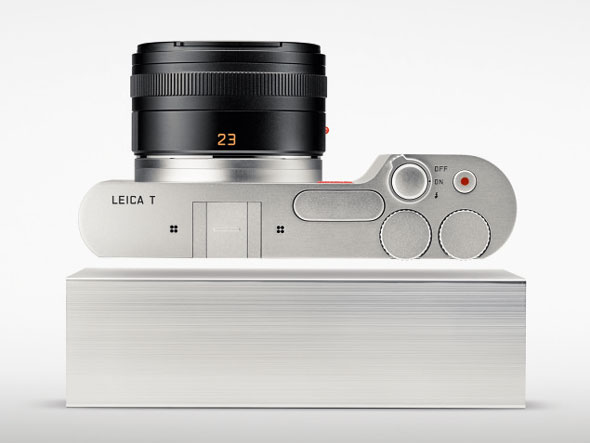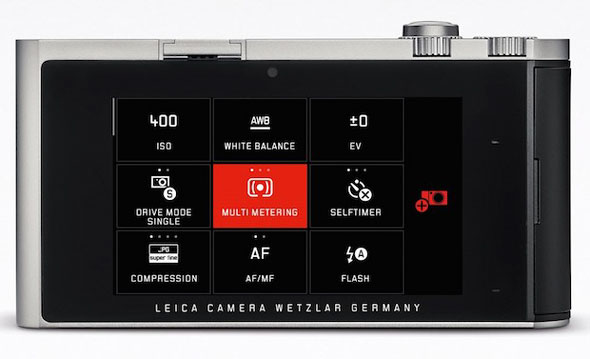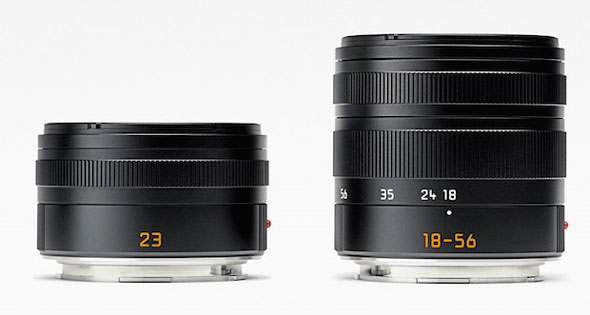Specs aside — it’s a “typical” Leica with relatively noisy upper ISO levels and unsurprisingly moderate AF speed — the new Leica T is quite a stunner. Well the ISO and AF judgment I got from people who shot preproduction models, so it can only get better. But as with any Leica, you don’t buy a Leica for its specs. This new T system camera with interchangeable lenses, APS-C sized 16MP CMOS sensor and 16GB internal storage is less about the latest specs and more about style and iconic design. The traditionalist camera maker confidently moves into the modern world of photography with a bold new product — which is, above all, designed as a very high quality fashion item rather for the affluent than the pro or photojournalist.

Says Leica photographer Kristian Dowling:
This is a very simplistic camera and is clearly aimed at the newer generation of photographers that have grown up with touchscreen communication tools like the iPhone and Android devices.
I don’t attempt to pretend to “review” the camera. Read Steve Huff‘s great in-depth hands-on. It’s a nearly mature product right at launch with few hitches. Steve calls it a “fabulous mirrorless solution from Leica” and something that “will never be cheap,” hey well it’s really made in Germany. The lenses are made by Panasonic in Japan to, quote, “Leica specifications.” With German prices. Each of the two lenses at launch costs about as much as the body.
Still, $1,850 for body only is not too bad. Leica’s certainly attempting to go more mainstream — one of the main reasons they built the new Wetzlar factory in the first place. They couldn’t market the T with the M production constraints. Nevertheless, this first generation of this MILC Leica is a lot about design — well have a look at all the stylish leather holster accompanying the T. You can literally become a T shooter from tip to toe…
Leica is also making an adapter ($395) for M mount lenses, so virtually any Leica rangefinder lens from the last 60 years can be used, albeit with crop limitation. Plus you lose autofocus and there’s no microlenses to offset corner distortion.
With cameras becoming more and more similar, on the computer screen even smartphones deliver hardly distinguishable quality. Design is the about last frontier of identification and differentiation. The T is the company’s first non-rangefinder mirrorless camera with a completely new industrial design and all-new lens mount. Even the pop-up flash that hides seamlessly into the camera’s chassis is stylish. Overall, the Leica T bears a striking resemblance to the one-off Leica M auctioned off last year that was designed by Apple’s Jonathan Ive and Marc Newson.

Every Leica T is designed from and carved out of a solid 1.2-kilo aluminum block, which is what gives the camera its final uniform, sleek finish and timeless premium look. Don’t believe it? Here’s the proof, world’s most boring Leica T camera polishing ad (you wonder why they have no machine for that…):
Writes The Verge:
Leica partnered with Audi’s design team to come up with the T’s stark, modern look. (This isn’t the first time the German companies have joined forces: Audi was responsible for 2013’s Leica C P&S shoot and the stunning Titanium M9 from 2010.) It’s the first interchangeable lens camera to have a true unibody aluminum frame, which Leica machines out of a single block of metal. It’s not unlike Apple’s manufacturing process for the MacBook, though the Leica T is being manufactured in a brand new factory in Wetzlar, Germany built specifically for it. And in true, hand-built Leica fashion, each T chassis is subjected to 45 minutes of polishing by a skilled Leica employee before the electronics are added to it. By hand, of course.
The Titanium-clone T — same leather holster! — looks very solid and the cold touch of the aluminum is supposed to feel great in your hand.
Aside from its clean minimalist lines, what separates the T from the rest is the lack of buttons and physical controls. You’ll get (a Leica first!) touchscreen LCD that according to early testers is very smooth and intuitive to operate. There are two thumb dials, a shutter key surrounded by a power toggle, and a key for movie recording. The chassis abstains from unnecessary markings clutter. It’s all clean and you’ll even get a Leica iOS app for remote control and image transfers.
The design becomes perfect when it touches on a product’s essence and the task’s most inner philosophy. Wise Ming Thein Leica T words:
Let me say up front that whilst I have been very clear that innovation has been somewhat lacking in the camera industry across the board of late, there have been a few standouts that do so precisely because they push various aspects of the game — be it image quality or more rarely, ergonomics. I’ve long had the feeling that Apple’s latest camera implementations — touch once to lock exposure and focus, again to shoot — have really distilled the essence of the camera down to its bare minimum. It uses technology not to pad out a spec sheet, but to free the photographer to concentrate solely on composition. Shame then, that none of the more capable cameras have really gotten this implementation right — until now. I believe the Leica T is the first generation of a paradigm shift in the way we control and interact with our cameras.

Beautiful Apple-like design yes, but the more I wonder about the plasticky look of the two lenses at launch: an 18-56mm F 3.5-5.6 (28-85mm in 35mm equivalent) Vario-Elmar zoom and a 23mm (35mm) F2 Summicron prime lens. We’re talking style here. However stellar the optics are, let’s assume it’s only a matter of time until the truly beautiful silver body is matched by the appropriate lenses. At launch only the silver body is available, expect the somewhat less classy looking black anodized version by mid-year.
While this new Leica certainly marks a milestone for the German camera maker, the Leica T might be more be about style than substance. Sure thing this aluminum T could last forever! But everything in these digital days is more perishable than in the past. The T no less is a lot about fashion accessory. Great looks, farseeing concept, alright insides. And costing an arm and a leg. Never expect anything “cheap” from Leica, even when not assembled in Germany. The Visoflex viewfinder for $595? Complaining is futile. This is and will always be Leica. In return you get something partially handcrafted that’s not only nice to look at.
While the Leica T might be more about being seen than seeing, I still prefer a good looking camera with mojo over the boring top of the line model with no character. Neither speed demon nor resolution champ, his T certainly has character. Leica’s on the right track. A new lineup is born that’ll bless us with many more incarnations to come.
What about the future of the M system? Someone with company insights told me to not expect an M Typ 240 update within quite some time. There’s not much to add to or improve the M with — except for a new sensor and electronics. The M now is as good as it get, as perfect as the M can become. That’s why the T is not full-frame. Again Kristian Dowling:
The camera is aimed at a new niche market — consumers who appreciate fine quality products but want something with modern design, simplistic use and a strong brand status. These customers do not “need” a full frame-sensor — in fact most people do not “need” one.
With the T Leica has finally arrived at the present day. The new lens mount allows the Germans to break new ground. With its minimalist concept and “essential” approach and the T might even become more intuitive to operate than the M. Well done Leica, now just give me a fast prime metallic silver/silver combo.
For more on the T system visit Leica.
+++ You can order the Leica T from B&H Photo (silver / black) and Adorama (silver / black). Check for availability on Amazon.
Available lenses are the 18-56mm F3.5-5.6 Vario-Elmar zoom (B&H Photo / Adorama) and 23mm F2 Summicron prime (B&H Photo / Adorama).


